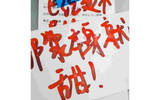How to improve the strength and taste of espresso? What is the powder-to-liquid ratio used to extract espresso?
From the perspective of extraction, whether a cup of espresso is good depends first on the choice of coffee beans, secondly on the flavor and concentration of the concentration, and finally on the ratio of materials, temperature and other details. Among them, concentrated production has troubled many family coffee makers because of various emergencies.
For example, due to the insufficient concentration of concentrated coffee, coffee tastes faint or has a "watery feeling" and has almost no aroma. When faced with this situation, someone raised doubts on Xiangjie: Can you extract more coffee liquor if you want to increase the concentration of coffee without changing the degree of grinding? Or extend the extraction time of concentration?
What factors are related to the concentration of espresso coffee?
Let's first observe the complete extraction process of concentration. Here, we extract a handful of concentration (20g powder, 30 seconds, 40g coffee liquor) according to the parameters debugged today by Qianjie's classic Italian blend coffee beans, and then use three cups. Cut the front, middle and back sections of the concentration in units of 10 seconds, and taste the taste of the three parts in turn.
It can be seen that the color of the coffee liquor ranges from dark to light, and the texture also ranges from thick to thin. The first cup of coffee has the highest aroma and concentration, with a thick caramel aroma and salty; the second cup has a moderate taste, with a nutty flavor, and is relatively balanced; the third cup has the lowest concentration, and the oil begins to turn white, which means that the concentration of the coffee liquor gradually decreases with the increase of the extraction amount, the aroma also changes from strong to light, and the taste changes from thick to thin.
Can you have more coffee?
In theory, the substances in coffee that can be carried out by water account for about 30% of the weight of beans. Among these 30%, part is pleasant delicacy and the other part is less pleasant negative taste. The Golden Cup Guidelines believe that if the coffee extraction rate is in the range of 18 - 22%, the soluble aromatic substances obtained are relatively delicious.
Through the above observation on concentration, when the oil begins to turn completely white from yellow, it actually means that most of the good flavor substances in coffee have been released, and we need to stop the extraction. If hot water continues to wash the powder layer, remaining negative flavor substances, such as woody taste and bitterness, will fall into the coffee cup with the liquid. Therefore, just like handchong, if you want espresso to taste good, you must properly control the extraction rate of concentration, that is, while obtaining good flavor substances, you must also try to avoid the negative taste caused by too many substances.
Unlike hand-brewed coffee, because the water output of the espresso machine is difficult to directly measure, we are more accustomed to using the "powder-to-liquid ratio" as the main parameter for controlling espresso concentrate extraction.
The powder-to-liquid ratio depends on two factors, one is the amount of coffee powder and the other is the weight of coffee liquid. Generally speaking, the industry-recommended powder-to-liquid ratio is between 1: 1.5 and 1: 2.5, of which 1:2 is the most common. For example, Qianjie recommends extracting with 1:2 for a newcomer when making espresso for the first time., and then adjust it up and down according to demand, because concentrates made at this ratio often have a high enough concentration without losing the coffee flavor it deserves.
Qianjie once conducted a simple small experiment: Just while keeping parameters such as water temperature (94℃), pressure (10 Pa), grinding degree (Galileo Q18 scale 2 grids), and powder amount (20g) unchanged, Qianjie will extract three cups of concentrates with different liquid weights in turn, which are 40g, 46g, and 55g, with the corresponding ratios of 1:2, 1: 2.3, and 1: 2.75, and then test the concentration of each cup of coffee and taste it.
The compiled data shows that the more coffee is extracted, the lower the concentration, and the taste of the coffee begins to deteriorate with the increase of liquid volume, resulting in over-extraction. Taking into account the extraction rules of concentration, Qianjie found that when the degree of grinding and powder amount remained unchanged, the concentrated liquid output increased (the time was extended), which meant that the more hot water passed through the coffee powder, the more it was extracted. More soluble substances, so the extraction rate was higher. At the same time, the more water, the more the coffee is diluted, so the lower the concentration.
If you want to make coffee stronger, what should you do?
1. When we use medium and deep roasted coffee beans, the aroma substances are usually concentrated in the front and middle sections, and the concentration is often "diluted" in the end sections. To increase the coffee concentration, Qianjie recommends using a high-concentration and low-extract method to discard the latter sections. Abandon it and turn it into a Ristretto.
Take 20g of coffee powder as an example. The original powder-to-water ratio of 1:2 required extraction of 40g, but the adjustment plan was changed to 1: 1.5 required extraction of 30g, so that the coffee flavor will be stronger and the taste will be more solid.
2. If the coffee beans you use are fruit acid type SOE or medium and light roasted, the overall taste is sour and the aroma is light. If you want the coffee to have a high concentration, you can appropriately extend the extraction time to increase the extraction rate.
For example, when Qianjie applied the "basic formula" to make Huakui SOE, the overall flavor of the coffee was weak, and even the aroma was covered by milk. Therefore, 0.5g of powder would be added to extend the extraction time to 33 - 35 seconds, thus allowing more The flavor substances were released, making the milk coffee have a richer fruit aroma.
Important Notice :
前街咖啡 FrontStreet Coffee has moved to new addredd:
FrontStreet Coffee Address: 315,Donghua East Road,GuangZhou
Tel:020 38364473
- Prev

The clerk of Ruixing Coffee wrote red letters on the receipt! The customer asked to come to the door to apologize?!
▲ Click to pay attention| Daily Boutique Coffee Culture Magazine Coffee Factory Recently,"Jingshi Live Broadcast" reported that on October 31, a customer posted a loss on the social platform, saying that when ordering coffee in a chain store, he made a note that "taste lighter." After receiving the drink, he found that the order receipt was filled with red markers
- Next

The country's first store was closed for rectification! "People's Cafe" apologizes!
▲ Click to pay attention| Daily Boutique Coffee Culture Magazine Coffee Workshop On November 5, China Youth Daily and other media reported that the brand of the "People's Cafe" that hit the country was involved in compliance disputes and attracted the attention of all sectors of society. Reports said that the word "people" in the logo of the "People's Cafe" may cause people to have
Related
- Being chased out of the rain in front of Starbucks?! Store: Sheltering from rain under umbrellas poses a safety hazard
- The white moonlight has changed?! Lucky launches "Big Winter Pear American"
- Hand-brewed coffee three-stage method, high-sweet and universal brewing method to share! What does the high sweet water level of hand-brewed coffee mean?
- What is the difference between raw, refined and full espresso coffee? How to extract espresso and taste good?
- A complete list of coffee bean names and their meanings! What is Yejia Shefi coffee? Where is Mantelin coffee?
- What grade does Arida Manor Kaduai coffee beans belong to? What treatment is Arida ASD slow anaerobic sun exposure?
- The milk tea cup becomes smaller?! Overlord Tea Girl launches a new "Return to Yunnan" series
- Accused of selling counterfeit and high-priced coffee beans! Well-known boutique coffee brand "Oukelao" bowed and apologized!
- How to make espresso dumplings? Can I eat coffee and glutinous rice balls together?
- Save the unformed and stagnant powder cakes in one second! What is the problem with stagnant water in the powder bowl of the espresso machine?

